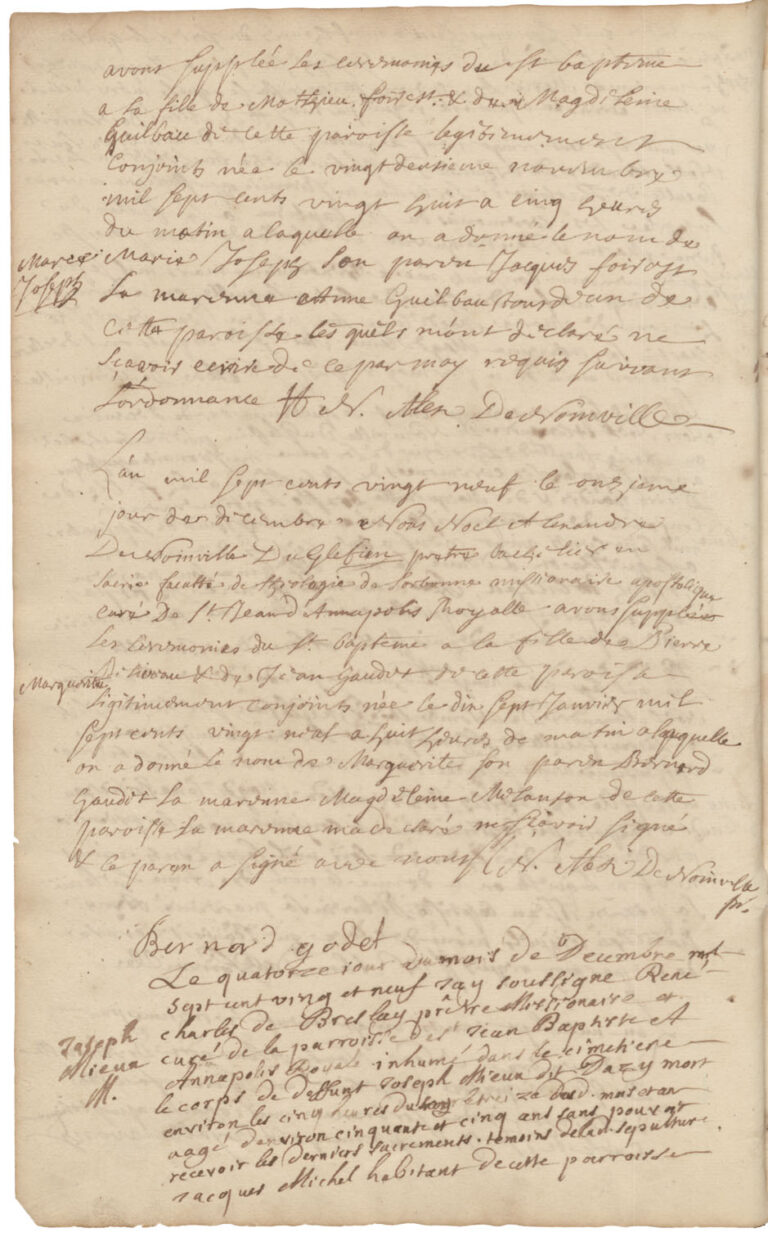
joseph mius D'Azit D'Entremont
Date of Birth
In about 1679
Place of Birth
Nova Scotia, Canada
Towns / Cities Moved Into
Nova Scotia, Canada
Port Royal, Annapolis Country, Nova Scotia, Canada
Known Occupation
-
Religion
-
Death Information
Year of death
1729
Place of death
Port Royal, Annapolis Country, Nova Scotia , Canada
Cause of death
Type D Niemann-Pick Disease
Burial location
Garrison Graveyard
Annapolis Royal, Annapolis Country, Nova Scotia, Canada
Obituary

Parents

Marie Micmac Indian Woman

Philippe Mius d'azit d'entremont
Marital Status


Married marie amirault dit tourangeau
in about 1699
In Port Royal Acadie
Siblings









Children












Narrative / Story
In the lush landscapes of Nova Scotia, Canada, around the year 1679, a child named Joseph Mius d’Azit d’Entremont was born, destined to become a symbol of cultural blending and resilience in the face of colonial challenges. Joseph’s life story, deeply rooted in the Acadian community, is a testament to the enduring spirit of a people navigating the complexities of early Canadian history.
Joseph was the only son of Philippe Mius d’Entremont dit d’Azit raised within the white community as a metis, marking him as a unique figure in a time of significant colonial expansion and cultural intermingling. His early life in Nova Scotia was likely shaped by the socio-economic dynamics of a mixed heritage individual in a colonial setting. The Acadian community, known for its mixed European and Indigenous roots, often faced complex social dynamics amidst the colonial powers of France and Britain.
In about 1699, Joseph’s life took a significant turn as he married Marie Amirault dit Tourangeau in Port Royal, Acadie. Together, they embarked on a journey of family life, welcoming a large brood that included Joseph, Charles, Francois, Angelique, Josephte, Claire, Madeleine, Jean-Baptiste, Marguerite, Cecile, Rosalie, and Charles-Benjamin Mius. This growing family not only symbolized the union of Joseph and Marie but also became a crucial link in the genetic history of the region. Both Joseph and Marie were carriers of Type D Niemann-Pick disease, a genetic condition that would become a defining aspect of their legacy, particularly prevalent around Yarmouth, Nova Scotia.
Joseph’s life was deeply intertwined with the Acadian community’s efforts in agriculture and land reclamation. The Acadians, known for their ingenuity in transforming marshlands into fertile agricultural fields, played a significant role in shaping the landscape of Nova Scotia. This feat of agricultural prowess was not just a testament to their hard work but also a reflection of their deep connection to the land.
The cultural integration of Joseph’s family and community was further highlighted by their positive relations with the Mi’kmaq people. This harmonious relationship, rare in the colonial era of North America, was evident in the high number of mixed heritage individuals in the area, a testament to the mutual trust and respect between the two peoples.
Joseph’s journey came to an end in 1729 in Port Royal, Annapolis County, Nova Scotia, Canada. He succumbed to Type D Niemann-Pick disease, the same condition that marked his and Marie’s genetic legacy. His final resting place in the Garrison Graveyard in Annapolis Royal, Annapolis County, stands as a silent witness to his life and times.
Joseph Mius d’Azit d’Entremont’s story is more than just a personal narrative; it is a chapter in the broader history of the Acadian people. His life reflects the challenges and triumphs of a community caught between colonial powers, striving to maintain their cultural identity and independence. His legacy, marked by his large family and the genetic condition they carried, offers a unique window into the life of an Acadian family in early 18th-century Nova Scotia, a narrative of survival, adaptation, and resilience.
